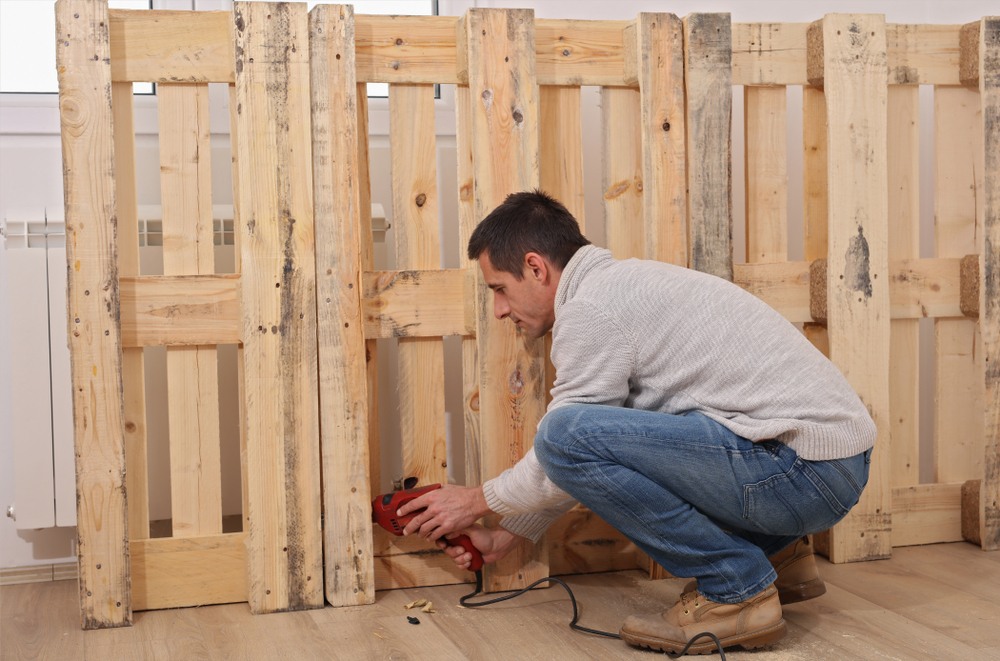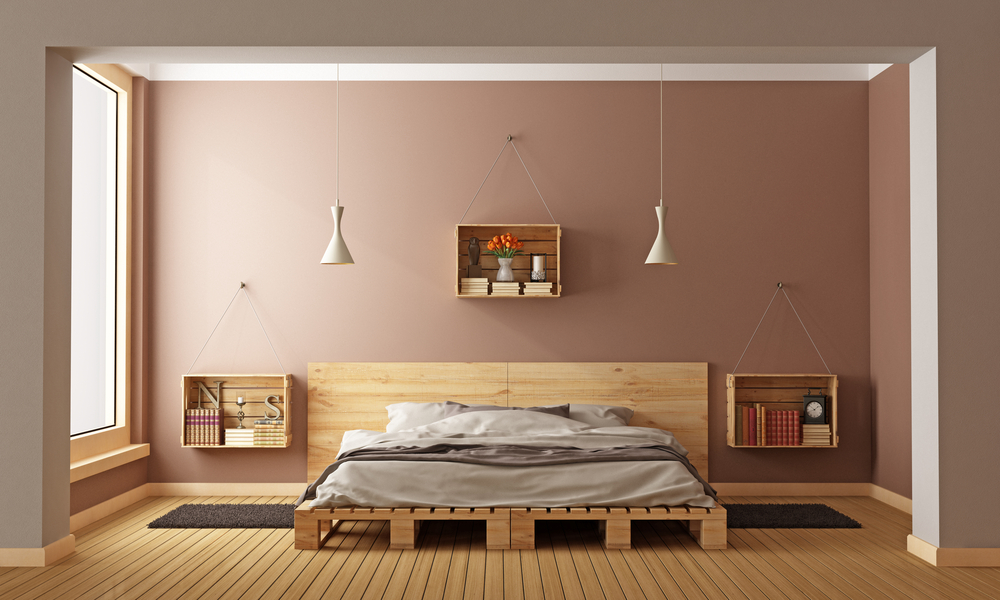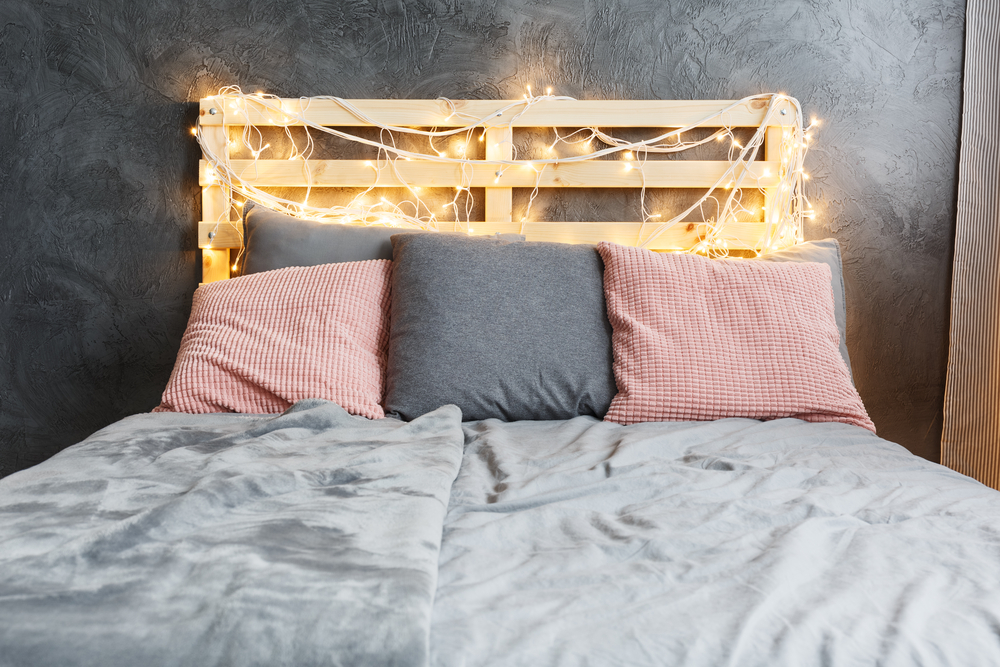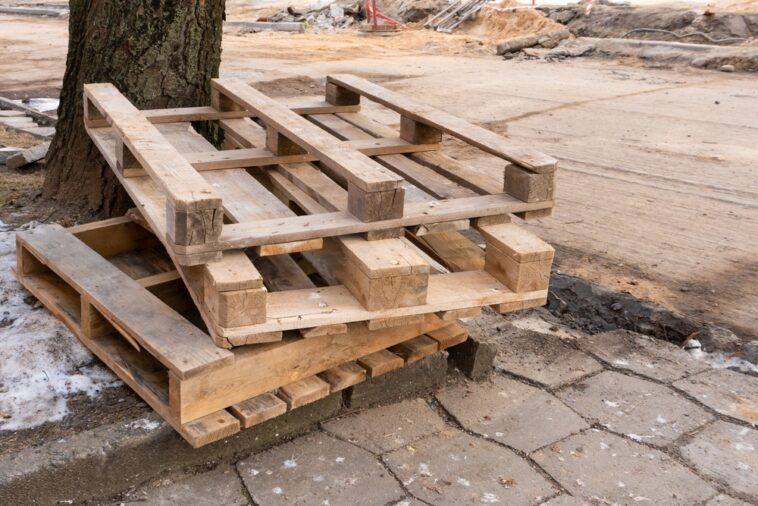Build Pallet Beds
Are you looking for a cost-effective and creative way to furnish your bedroom? Building pallet beds offers a unique and eco-friendly solution that adds rustic charm to your sleeping space. In this comprehensive guide, we will walk you through the step-by-step process of building pallet beds. Whether you're a seasoned DIY enthusiast or a novice, this detailed guide will help you create a cozy and stylish bed using pallets.
Pallet Beds
Pallet beds are becoming increasingly popular due to their affordability, versatility, and sustainable nature. These beds are constructed using wooden pallets, which are typically used for transporting goods. By repurposing these pallets, you can create a unique and personalized bed frame that suits your style and budget. Before diving into the building process, let's explore the benefits of pallet beds:
- Cost-Effective: Pallets can often be acquired for free or at a low cost, making them an economical choice for bed construction.
- Customizable: Pallets offer endless design possibilities. You can personalize your bed by choosing different sizes, colors, and finishes to match your bedroom decor.
- Eco-Friendly: Repurposing pallets helps reduce waste and promotes sustainability. By giving new life to discarded pallets, you contribute to a more eco-conscious lifestyle.
Now, let's delve into the step-by-step process of building your own pallet bed.

Choosing the Right Pallets
Selecting the appropriate pallets is crucial for the success of your pallet bed project. Consider the following factors in detail when choosing the right pallets:
- Pallet Size: Determine the desired dimensions of your bed. Standard pallets come in various sizes, such as 48×40 inches or 42×42 inches. Choose pallets that match your bed size requirements. If you prefer a larger or custom-sized bed, consider sourcing pallets that can be easily modified or combined to achieve the desired dimensions.
- Pallet Condition: Inspect the pallets carefully to ensure their structural integrity and durability. Look for pallets without cracks, splintered or loose boards, or signs of damage. Pallets with structural issues may compromise the stability and safety of your bed. Avoid using pallets that show signs of rot, insect infestation, or water damage, as they may affect the overall quality and longevity of your bed.
- Pallet Material: Consider the type of wood used in the pallets. Opt for hardwood pallets, such as oak, maple, or birch, as they are generally more sturdy and durable. Hardwood pallets can withstand the weight and strain of a bed frame better than softwood pallets. Softwood pallets, like pine or spruce, may be more prone to wear and tear over time. Ensure the pallets you choose are in good condition and made from solid, reliable wood.
- Pallet Sourcing: Obtain pallets from reputable sources to ensure their quality and safety. Check with local businesses, warehouses, or online marketplaces that offer pallets for sale or for free. Reach out to construction sites, industrial areas, or shipping companies that may have surplus pallets.
Preparing the Pallets
When it comes to choosing the appropriate pallets for your pallet bed project, careful consideration of various factors is essential. Follow these detailed steps to ensure you select the right pallets:
- Pallet Size:
- Determine the desired dimensions of your bed. Take measurements of your mattress or the space where the bed will be placed.
- Standard pallets come in different sizes, such as 48×40 inches, 42×42 inches, or 36×36 inches. Choose pallets that align with your bed size requirements.
- If you prefer a larger or custom-sized bed, consider sourcing pallets that can be easily modified or combined to achieve the desired dimensions. Look for pallets with consistent sizes to ensure a uniform bed frame.
- Pallet Condition:
- Inspect the pallets meticulously to ensure their structural integrity and durability.
- Look for pallets without cracks, splits, or broken boards. Avoid using pallets with missing or loose boards, as they can compromise the stability and safety of your bed.
- Check for signs of damage, such as rot, insect infestation, or water damage. Pallets affected by these issues may weaken over time and impact the overall quality and longevity of your bed.
- Select pallets that are clean and free from excessive dirt, stains, or chemical residue. This ensures a hygienic sleeping environment.
- Pallet Material:
- Consider the type of wood used in the pallets, as it plays a significant role in their strength and durability.
- Opt for hardwood pallets, such as oak, maple, or birch, as they are generally more robust and resilient. Hardwood pallets can withstand the weight and strain of a bed frame better than softwood pallets.
- Softwood pallets, like pine or spruce, may be more prone to wear and tear over time. However, if they are in good condition and meet your other criteria, they can still be used for a pallet bed.
- Ensure that the pallets you choose are made from solid, reliable wood. Avoid pallets constructed with plywood or particleboard, as they may not provide the necessary strength for a sturdy bed frame.
- Pallet Sourcing:
- Obtain pallets from reputable sources to ensure their quality and safety.
- Check with local businesses, such as warehouses, manufacturing companies, or distribution centers, as they may have surplus or unused pallets available.
- Explore online marketplaces and classified ads where individuals or businesses offer pallets for sale or for free.
- Construction sites or industrial areas can be potential sources for pallets. Reach out to these places and inquire if they have pallets they are willing to give away or sell.
- When obtaining pallets, ask about their history and usage. Ensure they haven't been exposed to hazardous materials or treated with toxic chemicals, as these can pose health risks in an indoor setting.

Designing Your Pallet Bed
Designing your pallet bed allows you to create a personalized and unique sleeping space. Consider the following detailed steps when designing your pallet bed:
- Bed Frame Style:
- Determine the overall style and shape of your bed frame. Think about the aesthetic you want to achieve and how it will complement your bedroom decor.
- Popular bed frame styles for pallet beds include platform beds, raised beds, or traditional bed frames with a headboard and footboard. Choose the style that best suits your preferences and desired look.
- Additional Features:
- Decide if you want to incorporate additional features into your pallet bed design to maximize functionality and optimize space utilization.
- Consider built-in storage compartments or shelving. These additions can provide extra storage space for items such as blankets, pillows, books, or other personal belongings.
- Determine the type of storage you need based on your requirements and available space. You can customize the size and placement of the storage compartments according to your specific needs.
- Headboard Options:
- Choose whether to include a headboard in your pallet bed design. A headboard adds a focal point to the bed and provides support for pillows and cushions.
- You can create a headboard using pallets, which complements the rustic charm of the bed frame. Measure the width and height you desire for the headboard and select pallets that match those dimensions.
- Alternatively, consider repurposing other materials, such as reclaimed wood or even fabric, to create a unique and personalized headboard. This allows for greater design flexibility and customization.
- Bed Height:
- Determine the desired height of your bed, taking into consideration the thickness of your mattress and any storage needs you may have.
- Measure the height of your mattress and add an appropriate clearance for ease of getting in and out of bed. This will help you determine the overall height of the bed frame.
- Consider if you require under-bed storage or if the bed will be placed in a room with low ceilings. Adjust the height accordingly to ensure the bed fits comfortably in your space.
Assembling Your Pallet Bed
Now that you have planned the design, it's time to assemble your pallet bed. Follow these step-by-step instructions:
- Lay out the Pallets: Place the pallets in the desired bed configuration on a flat surface. Ensure the pallets are aligned and level.
- Secure the Pallets: Use screws or brackets to securely attach the pallets together. Place screws at strategic points to ensure stability and prevent movement.
- Reinforce the Corners: Reinforce the corners of the bed frame by attaching additional support boards or metal brackets. This step adds extra stability and durability to your pallet bed.
- Optional: Add Legs or Casters: If desired, attach legs or casters to the bottom of the pallet bed frame. This elevates the bed and allows for easier cleaning and mobility if needed.
Finishing Touches and Bedding
With the basic structure of your pallet bed complete, it's time to focus on the finishing touches that will enhance both the comfort and aesthetics of your bed. Follow these detailed steps to complete your pallet bed:
- Install Bed Slats:
- Place bed slats or plywood boards across the pallets to provide even support for your mattress.
- Ensure the slats are evenly spaced and secured in place to prevent sagging or shifting of the mattress.
- Consider using slats that are at least 2 to 3 inches wide to ensure optimal support.
- Add a Mattress:
- Place your chosen mattress on the bed frame. Consider the size and thickness of the mattress when positioning it on the pallets.
- Ensure that the mattress is centered and aligned properly on the bed frame to provide a balanced sleeping surface.
- If desired, you can add a mattress topper or foam padding to enhance the comfort of your bed. This extra layer can provide additional cushioning and create a smoother sleeping surface.
- Bedding and Accessories:
- Dress up your pallet bed with sheets, blankets, and decorative pillows that complement your bedroom decor and personal style.
- Choose sheets and blankets that fit your mattress size properly and create a snug and comfortable sleeping environment.
- Consider adding decorative pillows or cushions to enhance the overall look and coziness of your bed.
- To give your pallet bed a polished appearance, consider using a bed skirt or valance to conceal the space between the floor and the bed frame. This adds a neat and finished look to your bed while hiding any visible gaps.

Maintenance and Safety Considerations
To ensure the longevity and safety of your pallet bed, it's important to follow proper maintenance and safety practices. Consider the following detailed tips:
- Regular Cleaning:
- Dust and debris can accumulate on your pallet bed over time. Regularly clean the bed by dusting or vacuuming to remove any dirt or loose particles.
- Wipe down the pallets with a damp cloth as needed to maintain their cleanliness. This is especially important if your bed is placed in an area prone to dust or if you have allergies.
- Inspect for Damage:
- Periodically inspect the bed frame for any signs of damage or wear. Check for loose or damaged boards, cracks, or structural issues.
- Pay close attention to the joints and connections between the pallets. Look for any signs of weakness or instability.
- If you notice any damage or signs of wear, address them promptly. Replace or reinforce any loose or damaged boards to maintain the structural integrity of the bed.
- Safety Precautions:
- Ensure that your pallet bed is stable and securely assembled to prevent accidents or injuries. Double-check all connections and screws to make sure they are tight and secure.
- Use appropriate safety equipment when working with tools or handling pallets. Wear gloves to protect your hands and safety goggles to shield your eyes from potential splinters or debris.
- Proper Bed Support:
- Place your pallet bed on a solid, level surface to provide adequate support. This helps maintain the stability and integrity of the bed frame.
- Avoid placing the bed directly on a carpeted floor, as the soft surface may lead to instability or sagging. Instead, use a solid foundation such as a wooden floor or place plywood boards underneath the pallets for added support.
- Consider Bed Height:
- Take into consideration the height of your pallet bed and the ease of getting in and out of it. Ensure that the bed height is comfortable and suits your needs.
- If necessary, consider adding bed risers or adjustable feet to increase or decrease the bed's height according to your preference.
By following these detailed maintenance and safety considerations, you can enjoy a durable and secure pallet bed that provides a comfortable and safe sleeping environment.
Conclusion
Building a pallet bed allows you to unleash your creativity while keeping costs low and embracing sustainable practices. By following the step-by-step instructions provided in this comprehensive guide, you can create a unique and stylish bed frame that adds character to your bedroom. Remember to prioritize safety, maintain your pallet bed properly, and enjoy the cozy comfort of your DIY creation.




